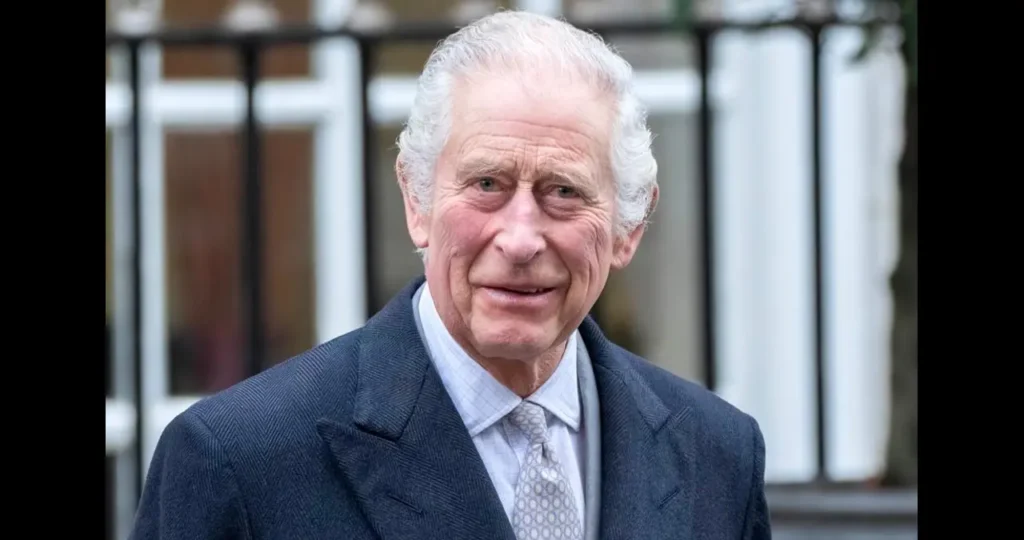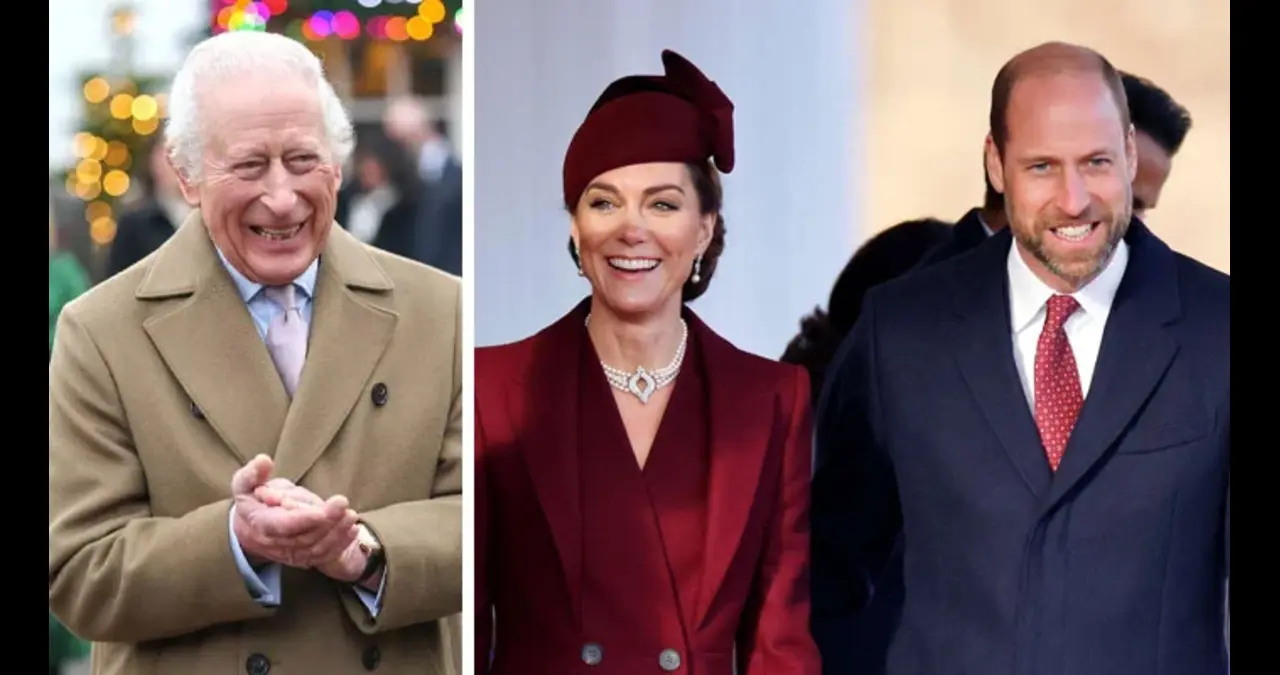Pride, Progress, and New Traditions
King Charles News In a move that turns heads across the kingdom, the royal household has shared an official message celebrating London Pride. For the first time, a video featuring the Household Division band performing outside Buckingham Palace carried the monarchy’s support for the parade.
This bold gesture signals a willingness to align the monarchy with modern values, embracing diversity and inclusion. Experts describe it as the royal equivalent of stepping into a new era—one foot firmly in tradition, the other boldly forward.
Beyond symbolic support, this message reflects a calculated move by King Charles to showcase a more open, progressive monarchy. It’s a careful blend of respect for royal continuity with awareness of shifting social norms.
Historic Visits & Diplomatic Engagements
State Visit from France
King Charles has warmly welcomed French President Emmanuel Macron and Mrs Macron to Windsor. This three‑day diplomatic trip emphasizes centuries‑long Anglo‑French friendship.
The program included a ceremonial procession, a state banquet laid out in Anglo‑French culinary harmony, and visits to art collections in the Royal Mews. The monarchy is doubling down on soft power diplomacy—using culture, cuisine, and tradition to foster unity.
King Charles and Macron also discussed environmental cooperation, signaling a continued royal role in climate advocacy. Expect these conversations to ripple beyond tea-and-toast agreements into future joint initiatives.
Public Appearances in Scotland
Accompanying the latest round of royal duties, Charles stood at attention during Scotland’s historic Ceremony of Keys. A striking image of him in full regalia was shared widely.
Meanwhile, his visit to Campbeltown was not without incident—an activist heckled him, only to be swiftly escorted away. Yet Charles remained composed, engaging warmly with locals and even sampling local whisky. His calm demeanor under pressure earned widespread public praise.
Cost‑Cutting and Green Policy
Decommissioning the Royal Train
In a major cost‑saving move, Charles has decided to retire the Royal Train after more than a century and a half of service.
Originally conceived in the age of steam, the train has become a symbol of privilege—and expense. Operating less frequently, yet costing in the millions per year, it’s being replaced by more flexible, efficient transport like helicopters. This isn’t just financial prudence—it’s symbolic: a monarch modernizing royal aura.
Crown Estate Profits and Sovereign Grant
The Crown Estate posted record profits thanks to offshore wind auctions and strategic property management.
While the sovereign grant remains tied to net income, renovations at Buckingham Palace continue, funded via surplus Crown Estate revenues. King Charles’s approach blends fiscal conservatism with cultural investment.
Art, Culture, and Personal Touches
Touring Royal Art
Charles has revealed his trove of tour paintings at Buckingham Palace—a collection tracing decades of global royal travel.
From the Galapagos to India, these artworks document not only his environmental advocacy but also cultural diplomacy. Publicly sharing them now emphasizes the monarch’s enduring personal connection to art, travel, and global goodwill.
Music and Commonwealth Unity
Earlier this year, Charles launched “The King’s Music Room” on Apple Music, celebrating songs from across the Commonwealth.
Narrated by the king himself, the programme underlines his long-standing commitment to community and shared cultural heritage. It’s modern outreach rooted in ancient connections.
Health, Family, and Internal Dynamics
Facing Cancer and Returning to Duty
Charles’s candid announcement of his cancer diagnosis followed by a brief hospital stay stunned many
Yet he has since returned to public life—visiting hospitals, attending garden shows, and embarking on state visits to Italy and Canada. His resilience has drawn empathy and support, framing him as a monarch willing to share vulnerability while shouldering duty.
Family Roles and Succession
As Charles focuses on recovery, Prince William and Kate Middleton are stepping into heavier roles, including new authority over royal warrants.
This shift signals formal preparation for their future King Charles News and resources, and Charles remains supportive—both through appointment and affection.

Royal Controversies and Internal Matters
Tensions at Sandringham
A feud inside Sandringham’s church—between the vicar and choirmaster—has drawn Charles into parish-level peacekeeping.
It’s a reminder that royal attention isn’t just reserved for palaces or parades. The monarch is still expected to bridge disputes—even small‑scale ones—to preserve unity in his domains.
Gift Transparency and Public Scrutiny
Critics are calling for full disclosure of royal gifts—none have been published since 2020
Monastic tradition meets modern demands for transparency, and Charles must decide if royal privilege can coexist with public accountability.
Quick Bio Table
| Feature | Details |
| Full Name | Charles Philip Arthur George |
| Title | King Charles III |
| Accession | Became monarch after Queen Elizabeth II’s passing in the autumn following her death. |
| Coronation | Eldest son crowned alongside his wife in the year following his ascension. |
| Age | Seventy-seven as of the current date. |
| Spouse | Queen Camilla. |
| Children | Prince William and Prince Harry (heir and second son respectively). |
| Health | Status Undergoing treatment for a form of cancer; publicly returning to duties. |
| Vision for the Role | Environmentalist, cultural advocate, inclusive, fiscally conservative. |
| Notable | Actions Pride support, train decommissioning, art exhibits, broader warrant authority to William & Kate. |
FAQs
What is the latest King Charles news today?
– The monarchy’s historic Pride message and decommissioning of the Royal Train are the most notable updates as of today.
How is his health?
– The diagnosis came earlier last year following a routine medical procedure. He experienced temporary side effects, but treatment has progressed and he’s resumed public duties.
Why is the Royal Train ending?
– The decision is financial and symbolic. With underuse and high maintenance, the train is being retired in favor of cost-effective alternatives.
What are King Charles’s current priorities?
– Modernization, fiscal prudence, cultural diplomacy, environmental leadership, and balancing tradition with social relevance.
Will William and Kate take on more responsibilities?
– Yes. They’ve been granted royal warrant powers and are increasingly visible, reflecting Charles’s plans for smoother succession.
What controversies surround Charles?
– Internal tensions at Sandringham church and criticism around gift transparency reflect ongoing challenges within the institution.
Final Thoughts
Charles is navigating a clever balancing act—honoring the traditions he inherited, modernizing the monarchy where it matters, and facing personal adversity with public grace. Whether it’s endorsing Pride, retiring long‑standing royal symbols, or handing authority to the next generation, it all points to a sovereign reshaping the royal role for today’s world.
Despite personal health challenges, Charles’s renewed visibility underscores a strong desire to lead—through art, diplomacy, fiscal responsibility, and cultural engagement. He continues to redefine what modern royalty can be—rooted in history, yet responsive to the present.



